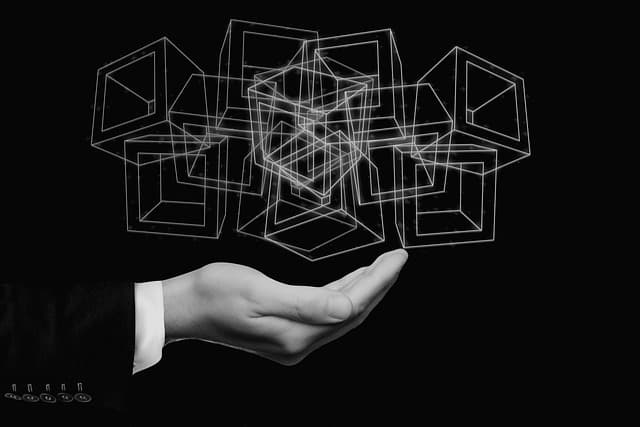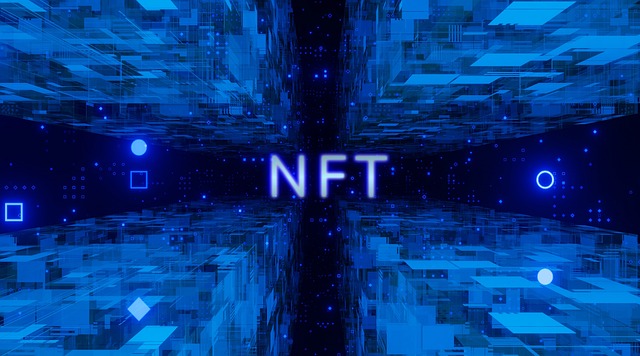Blockchain: What it is and How it is Used in Finance

Blockchain is the latest technology, the interest in which has grown along with the popularity of cryptocurrencies. Today it is widely discussed not only in the world of finance. Blockchain is already being used to store and process personal data and identification, in marketing and computer games. But what is blockchain? Let’s spell it out.
In literal translation, blockchain is a continuous chain of blocks. It contains all the records of transactions. Unlike conventional databases, you can’t change or delete these records, you can only add new ones.
Blockchain is also called distributed ledger technology, because the entire chain of transactions and the current list of owners are stored on their computers by multiple independent users. Even if one or more computers fail, the information is not lost.
We’ve collected concepts that are often used when discussing blockchain. They will help you understand how distributed ledger technology works.
Asset
Something of value: e.g. money, property, securities, information. Assets can exist in the real world, like an apartment or a car, or they can be entirely digital.
Transaction
When people transfer assets to each other, it’s called a transaction. Not only the asset itself can be transferred, but also the ownership of the asset from one owner to another.
Transaction Accounting.
Transaction accounting is the recording of all transfers of an asset or the right to it from one person to another. And here a key question arises: how reliable and confidential is the mechanism for confirming the transfer of rights?
Suppose you decided to transfer a hundred euros to a friend who found himself without money abroad. Problems with the bank’s systems, hacker attacks, fraud, or employee errors can cause a failure at any of these stages. Of course, this rarely happens, but it does. And then transaction records can disappear or change, and transactions can be suspended.
These transaction risks are unavoidable if records are kept by specific organizations and transaction records are stored in only one place. Blockchain technology mitigates these risks because it offers a distributed ledger system.
Distributed registries
In blockchain, the owner’s registry is not stored on a single organization’s server. Its copies are simultaneously updated on multiple independent computers connected over the Internet.
As a consequence, in blockchain, registries with asset owner data cannot be faked. After all, this data is stored on the computers of a huge number of network participants. And to ensure that all users’ information is absolutely complete and correct, blockchain has introduced the concept of consensus.
Consensus
If some of the participants turn off their computers and some of their transactions are not posted or their records are not correct, the network will not be affected. The consensus procedure, that is, reaching agreement, will restore the correct information.
In real blockchain networks, several transactions occur over a period of time. And records of transactions are included in one block.
Block
A block is a record in a distributed ledger of several transactions. It reflects who transferred what amount of assets to whom and when. All blocks are consecutively connected in one consecutive chain.
Chain
A blockchain is unbreakable because each block contains a link to the previous block. Blocks cannot be changed or deleted, only new blocks can be added. This way, it is always possible to reconstruct the history of a particular asset’s transition from hand to hand and know its current owner. New blocks are added to the chain by miners.
Miners
Miners perform several functions in the blockchain:
- Store copies of the blockchain and thereby protect information from loss or tampering;
- Confirm transactions;
- Verify transactions that other miners have logged.
As a rule, there is no limit to the number of miners. The more of them, the better – such a network is more reliable. Everyone can become a miner. They need specialized computers and software to do that. But what motivates miners to register new transactions? Miners are rewarded for maintaining the network.
The reward is
Typically, these are commissions from all participants in transactions recorded on the block, and a reward from the network itself. The network generates this reward according to a certain algorithm.
This is what usually happens with cryptocurrencies: the reward is a certain amount of cryptocurrencies themselves. They arise literally out of thin air and end up in the miner’s account. This is how new units of virtual money are issued, and the total amount of virtual currency increases. But more often than not, there is a restriction: when the amount of coins reaches a certain maximum, their issuance stops. From there on, miners can only work for a fee from the participants.
This is an example of a blockchain: each block contains the time and result of all previous transactions. The algorithm is set up so that every 10 minutes some miner adds a new block to the chain and mines 5 new units of cryptocurrency.
But which of the many miners will win the right to add a block and be rewarded for it? To do this, most blockchain networks generate special tasks.
Tasks
The probability of a miner’s luck – that he will be the first to solve the mathematical problem proposed by the network, join the block and get a reward for it – most often depends on the power of his equipment. The more powerful his computers are, the better the chances of earning. Where and how exactly do miners and transaction participants receive the transfers? They use anonymous digital wallets for this purpose.
Wallet
A wallet is a special identifier. It keeps a record of the participant’s account status (and it’s not necessarily money, but any assets). A wallet also allows you to know the entire history of a particular participant’s transactions.
Most often such wallets are anonymous – they do not allow you to find out who exactly receives or sends assets from it. There is also a danger in this. If the owner of the wallet forgets its number, for example, there is no way to prove that the account belongs to him. Everything stored in the wallet will be lost forever. E-wallet data and blockchain transactions are protected by encryption.
Encryption
How do you ensure that transaction and wallet information is correct, complete, and confidential? In the face of anonymity, how do you access your assets? There is an entire science of how to solve these problems – cryptography. Encryption is one of its methods.
In blockchain networks, the buyer and seller of an asset confirm a transaction using cryptographic keys – special unique digital codes. It is virtually impossible to guess the sequence of characters in the digital code of cryptographic keys. This makes blockchain technology one of the best for financial transactions. But at the same time, there have already been cases of wallets being hacked, so it is better to connect them to the network only for the duration of transactions and keep them offline the rest of the time.
Features of distributed ledger technology
- The asset can be anything: for example, stocks, digital tokens, real estate rights, gold or books.
- Transactions are almost instantaneous, but may take time to confirm. How long is determined by the consensus algorithm of a particular blockchain network.
- Transactions are confidential and anonymous: the buyer indicates only his cryptocurrency number.
- Commissions are minimal because instead of centralized intermediaries, the transactions are recorded by miners. The commissions are their remuneration for keeping the blockchain network running. But there are usually a lot of miners and there is a lot of competition between them, which keeps the commissions low.
- Buyers’ rights are well-protected: it is impossible to undo or change transactions that have already been made. All transactions are recorded in the blockchain.
- Information is stored securely because the history of all transactions is recorded in the blockchain and distributed to all participants in the network. Each block contains information about all previous transactions “from the beginning of time”.





